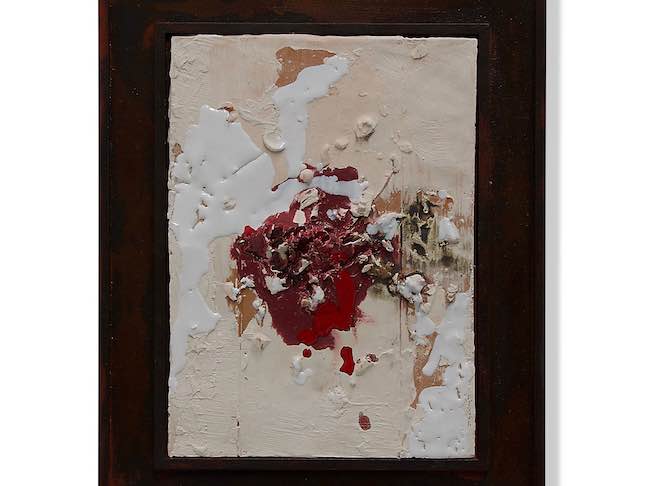Le tecniche più antiche che hanno costituito una parte importante della possibilità per l’uomo contemporaneo di conoscere usi, costumi e tradizioni delle popolazioni di molti secoli fa, trovano la possibilità di un forte rinnovamento nel momento in cui si sposano e approcciano la creatività attuale in grado non solo di trasformare oggetti in veri e propri complementi di arredo, ma anche di generare modalità nuove e inedite di decorare fondendosi con stili differenti che sono spesso la somma delle innovazioni appartenenti al secolo scorso, pur mantenendo l’impronta interpretativa dell’autore. La protagonista di oggi sceglie la ceramica come mezzo espressivo per la sua creatività che necessita di misurarsi con la materia per poi, in un secondo momento, agire dal punto di vista pittorico.
La ceramica ha costituito fin dall’antichità un mezzo comunicativo e al tempo stesso una forma artistica molto importante nelle principali civiltà del passato, poiché è stato proprio grazie ai reperti conservati e rinvenuti che si sono potute conoscere le abitudini, le tradizioni, i miti e le religioni delle civiltà più antiche come la greca, l’egiziana, la romana, l’etrusca, la cinese e la giapponese, paesi questi ultimi in cui la tecnica esecutiva si è talmente raffinata da aver prodotto esemplari di inestimabile valore tutt’oggi ricercati dai collezionisti. Nell’evolversi dei secoli le tecniche si sono modernizzate diventando più raffinate e dipinte con una gamma di colori più ampia, è stato ideato il tornio che permetteva una maggiore facilità esecutiva e di modellazione della ceramica, così come l’utilizzo della vernice vetrosa rendeva più duraturo il risultato finale impedendo il deterioramento delle decorazioni. Eppure questi oggetti erano utilizzati solo dal punto di vista funzionale, come contenitori per l’acqua, come corredo funebre per accompagnare il viaggio nell’aldilà dei propri cari, oppure, nel caso delle raffinate porcellane cinesi, come simbolo di ricchezza e opulenza, non a caso infatti i manufatti più preziosi appartenevano agli imperatori e usati nelle cerimonie del the oltre che in altre occasioni speciali della tradizione. Intorno al Tredicesimo secolo l’Italia, in particolar modo l’Emilia Romagna, cominciò ad avere una posizione centrale nella produzione della ceramica ampliando la tecnica esecutiva del passato alla produzione delle maioliche che divennero poi tipiche di molti altri paesi del bacino del mediterraneo, come in Portogallo dove presero il nome di azulejos, o nelle civiltà nordafricane di religione islamica dove le pareti e le cupole delle moschee erano interamente rivestite con piastrelle colorate. Ma il passaggio più determinante per la ceramica nell’essere considerata una forma d’arte avvenne nel Novecento, quel secolo dirompente e sovversivo in cui tutto ciò che prima era considerato parte dell’ordine prestabilito venne modificato nel nome di nuove regole e approcci decisamente rivoluzionari; molti artisti che furono traino per nuovi e impensabili stili artistici si misurarono infatti con creazioni in ceramica che smise pertanto di essere un elemento legato a oggetti di utilizzo quotidiano per trasformarsi in vera e propria opera di prim’ordine. Lucio Fontana, Pablo Picasso, Joan Mirò, Leoncillo Leonardi che addirittura basò la sua produzione scultorea proprio su quel tipo di materiale, furono solo alcuni tra i grandi maestri del Ventesimo secolo che contribuirono a dare una veste completamente inedita alla ceramica e su cui lasciarono il proprio segno creativo distintivo.
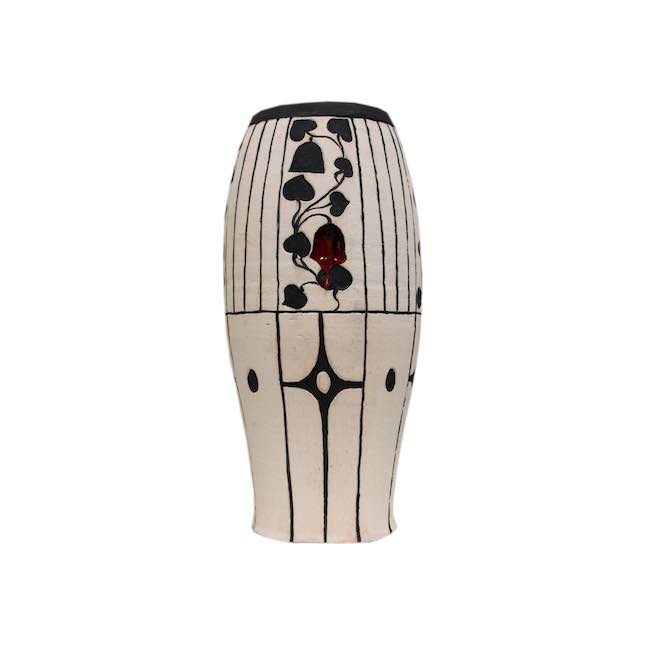
L’artista parmense Roberta Zucchi si forma frequentando corsi di pittura su ceramica al terzo fuoco e poi, dando seguito a quella che ormai aveva compreso essere la sua naturale inclinazione, si perfeziona studiando presso una scuola di pittura e scultura a Parma, dove impara a modellare la creta e a utilizzare altre tecniche di pittura su ceramica; ma è stato il trasferimento a Salsomaggiore Terme e l’incontro con le splendide decorazioni in Stile Liberty del grande maestro Galileo Chini, a determinare la scelta di aprire un proprio studio di decorazione. La possibilità di partecipare a mostre e a fiere del settore la porta casualmente ad Albissola, altra località di grande tradizione nell’utilizzo della terracotta e della ceramica, dove incontra il maestro d’arte contemporanea Giorgio Moiso di cui diviene allieva. La capacità decorativa della Zucchi non si limita a uno stile specifico perché per lei la vera creatività risiede nella capacità di modellare la ceramica dando vita a vasi, bocce e orcette in cui si misura sia con uno stile più figurativo che con quello più astratto sulla base del suo istinto creativo, sia a pannelli che possono avere molteplici utilizzi, da quello più strettamente decorativo all’intarsio su una parete piastrellata per dare un tocco personale a un ambiente. La maestria dell’artista emerge dalla capacità di mescolare i colori amalgamandoli e assecondandoli alle emozioni, alle sensazioni cha hanno bisogno di emergere ma anche di descrivere il messaggio all’interno dei decori, a volte più puramente estetici altre invece più orientati a suscitare riflessioni perdendosi all’interno della gamma cromatica scelta; le forme sono piuttosto tradizionali ma ciò che invece contraddistingue la Zucchi sono le immagini con sui si esprime per percorsi tematici.
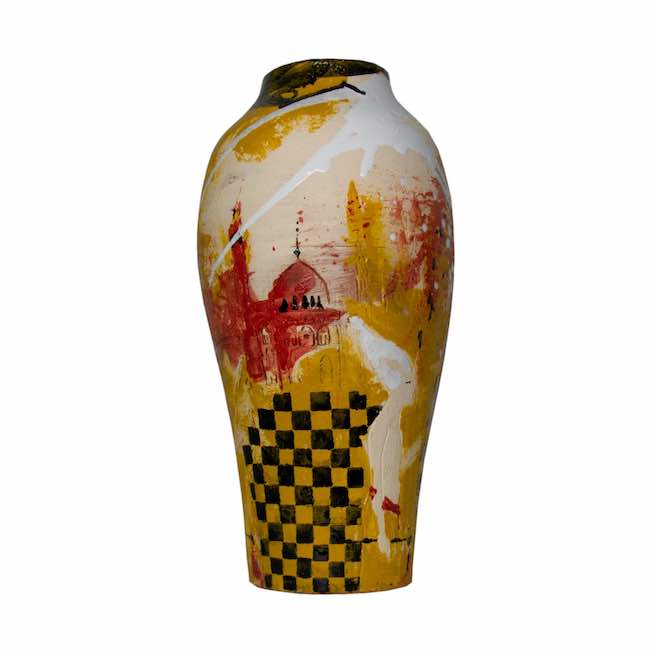

Nella serie dedicata all’Egitto dei vasi Cairo nel giallo e Cleopatra, ciò che emerge è la struttura grezza e ruvida della superficie della ceramica, quasi se l’artista avesse voluto infondere il senso del passato, di quell’antico che resta comunque una dimensione affascinante e magnetica nei confronti dell’osservatore contemporaneo il quale non può fare a meno di essere trasportato, grazie alle immagini della Zucchi, in quell’epoca lontana e solenne che ha lasciato dei segni indelebili nell’umanità. Il primo vaso è contraddistinto dal giallo della sabbia, dal rosso degli edifici e dalla semplicità quasi stilizzata del personaggio che ricorda le persone descritte nelle effigi funebri, nelle statuette o nelle tavole egizie, il secondo invece, su sfondo blu scuro pone in evidenza la figura della regina a cui è intitolato il vaso nell’atto di bere il latte d’asina, una delle caratteristiche che l’hanno contraddistinta e resa nota. Nelle orcette e nelle bocce invece l’approccio pittorico si modifica e si sposta verso l’Espressionismo Astratto, un movimento in cui la base comunicativa è sempre stata affidata al colore, all’intenzione esecutiva e alla capacità di trasmettere l’emozione dell’artista che poi doveva giungere diretta e immediata all’osservante.
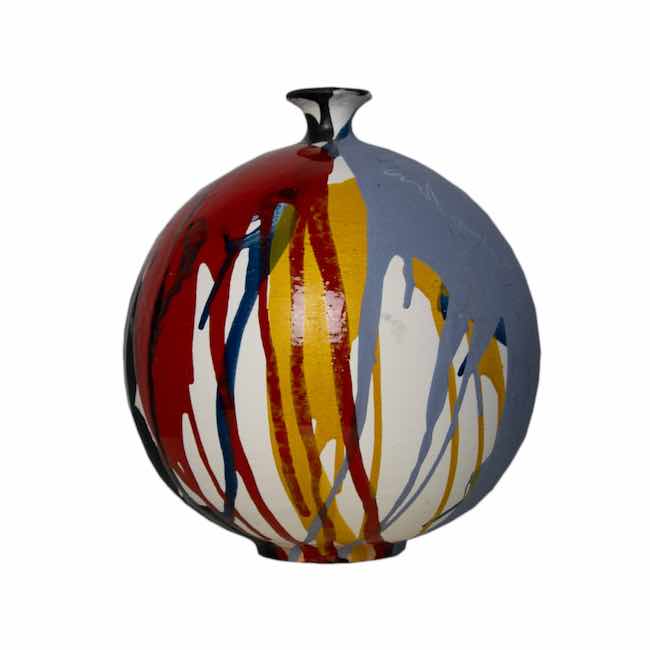
Nell’Orcetta n. 2 Roberta Zucchi sembra giocare con i colori primari, a cui però aggiunge il grigio, tanto cari al De Stijl di Piet Mondrian, pur lasciando colare il colore secondo la tecnica del Dripping tipica di Jackson Pollock, infondendo dunque un’illusione ottica che sembra divergere tra ciò che lo sguardo si aspetta davanti alle tonalità primarie, e cioè la linearità e la geometricità, e ciò che invece diventa possibile, la morbidezza della forma tonda e delle curve che sembrano ingentilire la compattezza dei colori pieni utilizzati.
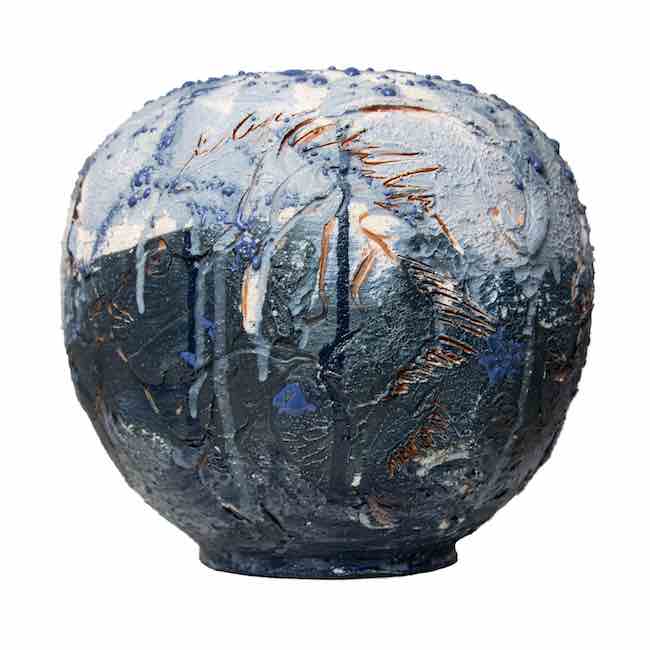
In Boccia Blu invece l’indefinitezza diviene predominante, non vi è più la distinzione formale poiché la necessità diventa quella di lasciare spazio all’immaginazione, alla sensazione suscitata dal colore azzurro declinato nelle varie tonalità che tende ad attrarre la dimensione onirica, sognante, a stimolare la meditazione e la fantasia; le gocce di colore, le linee intagliate sembrano essere esattamente quelle idee, quei sogni, che riempiono la mente e la vita delle persone le quali tuttavia sembrano impegnate a nasconderlo quel lato più emozionale e meno pratico. E dunque attraverso la ceramica artistica di Roberta Zucchi si nasconde un’esortazione a circondarsi di quel blu e di oggetti che in qualche modo aiutino l’individuo a non dimenticarsi di essere umano, di essere fragile proprio perché legato a una dimensione meno rigida e incredibilmente più bella.
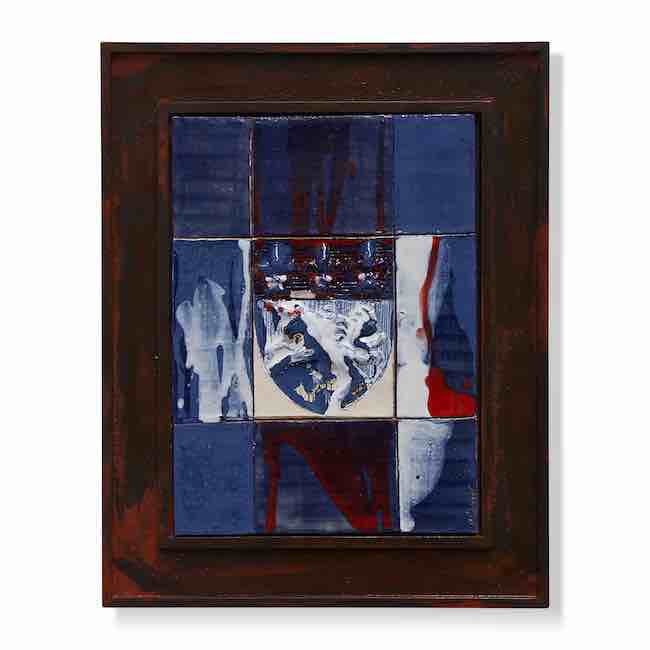
Anche nella serie dei pannelli l’artista si lega alla delicatezza delle immagini evocate, delle sensazioni suscitate, della fantasia che in qualche modo si trasforma in metafora della realtà perché un Unicorno blu può rappresentare quell’unico individuo in grado di completarne un altro, come se la rarità e la lunghezza della ricerca fossero poi premiate dall’incontro segretamente sperato.
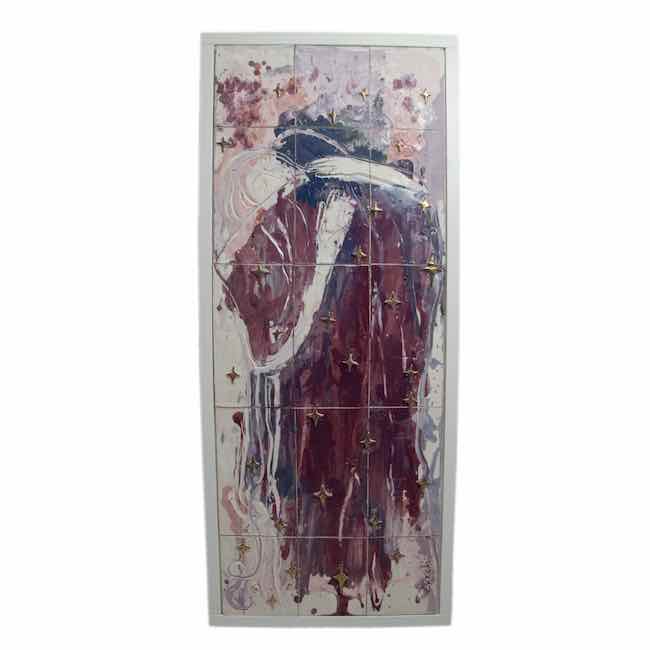
E ancora in L’abbraccio, ispirato al celeberrimo Bacio di Klimt, Roberta Zucchi pone l’accento sull’amore romantico, quello di cui hanno narrato tutti i maggiori artisti di ogni epoca, quello dentro cui rifugiarsi da tutto e da tutti, e che viene sottolineato ed enfatizzato da quei simboli tradizionalmente legati al sentimento più grande, come la delicatezza dei fiori e la magia delle stelle. Roberta Zucchi ha al suo attivo la partecipazione a diverse mostre collettive in Emilia Romagna, Toscana, Liguria e Lombardia e il suo nuovo atelier si trova a Parma, la città dove vive.
ROBERTA ZUCCHI-CONTATTI
Email: r.zucchi@robertazucchi.com
Sito web: https://robertazucchi.eu
Facebook: https://www.facebook.com/zucchiroberta
Instagram: https://www.instagram.com/zucchiroberta/
Roberta Zucchi’s ceramics, when traditional craftsmanship meets art
The most ancient techniques that have constituted an important part of the possibility for contemporary man to get to know the uses, customs and traditions of the populations of many centuries ago, find the possibility of a strong renewal when they marry and approach today’s creativity capable not only of transforming objects into real furnishing complements, but also of generating new and unprecedented ways of decorating by merging different styles that are often the sum of the innovations belonging to the last century, while maintaining the author’s interpretative imprint. Today’s protagonist chooses ceramics as the expressive medium for her creativity, which requires her to measure herself with the material in order to then, at a later stage, act pictorially.
Since antiquity, ceramics has been a means of communication and at the same time a very important artistic form in the major civilisations of the past, because it was thanks to the finds that have been preserved and discovered that it was possibile to learn about the customs, traditions, myths and religions of the most ancient civilisations such as the Greeks, Egyptians, Romans, Etruscans, Chinese and Japanese, the latter countries in which the technique of execution was so refined as to have produced priceless specimens that are still sought after by collectors today. As the centuries evolved, techniques modernised, becoming more refined and painted in a wider range of colours, the potter’s wheel was invented which allowed for easier execution and modelling of the pottery, just as the use of vitreous varnish made the final result more durable, preventing the decorations from deteriorating. Yet these objects were only used from a functional point of view, as containers for water, as grave goods to accompany the journey to the afterlife of loved ones, or, in the case of fine Chinese porcelain, as a symbol of wealth and opulence, not by chance in fact the most precious artefacts belonged to emperors and were used in tea ceremonies as well as on other special occasions in the tradition. Around the thirteenth century, Italy, especially Emilia Romagna, began to take a central position in the production of ceramics, extending the executive technique of the past to the production of majolica tiles that later became typical of many other countries in the Mediterranean basin, such as in Portugal where they took the name azulejos, or in the North African civilisations of the Islamic religion where the walls and domes of mosques were entirely covered with coloured tiles.
But the most decisive step for ceramics in being considered an art form occurred in the 20th century, that disruptive and subversive century in which everything that had previously been considered part of the established order was modified in the name of new rules and decidedly revolutionary approaches; many artists who were the driving force behind new and unthinkable artistic styles measured themselves in fact with ceramic creations that therefore stopped being an element linked to everyday objects to become a true work of the first order. Lucio Fontana, Pablo Picasso, Joan Mirò, and Leoncillo Leonardi, who even based his sculptural production on that very type of material, were just some of the great masters of the 20th century who contributed to giving ceramics a completely new look and on which they left their distinctive creative mark. Parma artist Roberta Zucchi trained by attending courses in ceramic painting at the Third Fire and then, following up on what she had by then realised was her natural inclination, she perfected her skills by studying at a school of painting and sculpture in Parma, where she learnt to model clay and use other techniques for painting on ceramics; but it was her move to Salsomaggiore Terme and her encounter with the splendid Art Nouveau decorations of the great master Galileo Chini that led to her decision to open her own decoration studio.
The opportunity to participate in exhibitions and fairs in the sector led her by chance to Albissola, another town with a great tradition in the use of terracotta and ceramics, where she met the contemporary art master Giorgio Moiso, whose she became student. Zucchi’s decorative skills are not limited to a specific style because, for her, true creativity lies in her ability to shape ceramics, giving life to vases, bowls and orcettes in which she measures herself against both a more figurative and a more abstract style based on her creative instinct, as well as panels that can have multiple uses, from the more strictly decorative to inlaying a tiled wall to give a personal touch to a room. The artist’s mastery emerges from her ability to mix colours, amalgamating them and following the emotions, the sensations that need to emerge but also to describe the message within the decorations, at times more purely aesthetic, at others more oriented towards arousing reflections, losing themselves within the chromatic range chosen; the shapes are rather traditional but what distinguishes Zucchi are the images with which she expresses herself through thematic paths. In the series dedicated to Egypt of the vases Cairo in the yellow and Cleopatra, what emerges is the coarse and rough structure of the ceramic surface, almost as if the artist had wanted to instil a sense of the past, of that antiquity that nevertheless remains a fascinating and magnetic dimension for the contemporary observer who cannot help but be transported, thanks to Zucchi’s images, to that distant and solemn era that has left indelible marks on humanity. The first vase is characterised by the yellow of the sand, the red of the buildings and the almost stylised simplicity of the personage who is reminiscent of the people described in funerary effigies, statuettes or Egyptian tablets. The second vase, on the other hand, on a dark blue background, highlights the figure of the queen to whom the vase is named, in the act of drinking donkey’s milk, one of the characteristics that distinguished her and made her famous. In the orcettas and bowls, on the other hand, the pictorial approach changes and moves towards Abstract Expressionism, a movement in which the communicative basis has always been entrusted to the colour, the intention of execution and the artist’s ability to convey emotion, which then had to reach the observer directly and immediately.
In Orcetta No. 2, Roberta Zucchi seems to play with primary colours, to which she adds grey, so dear to Piet Mondrian’s De Stijl, while allowing the colour to drip according to the Dripping technique typical of Jackson Pollock, thus instilling an optical illusion that seems to diverge between what the eye expects in front of the primary tones, namely linearity and geometricity, and what instead becomes possible, the softness of the round shape and curves that seem to soften the compactness of the solid colours used. In Boccia Blu, on the other hand, indefiniteness becomes predominant, there is no longer any formal distinction as the need becomes that of leaving room for the imagination, for the sensation aroused by the blue colour declined in the various shades that tend to attract the oneiric, dreamy dimension, to stimulate meditation and fantasy; the drops of colour, the carved lines seem to be exactly those ideas, those dreams, that fill the minds and lives of people who nevertheless seem committed to hiding that more emotional and less practical side. And so through Roberta Zucchi’s artistic ceramics lies an exhortation to surround oneself with that blue and with objects that in some way help the individual not to forget to be human, to be fragile precisely because they are linked to a less rigid and incredibly more beautiful dimension. In the series of panels, too, the artist binds himself to the delicacy of the images evoked, of the sensations aroused, of the fantasy that somehow becomes a metaphor for reality because a Blue Unicorn can represent that one individual capable of completing another, as if the rarity and length of the search were then rewarded by the secretly hoped-for encounter. And again in The Embrace, inspired by Klimt’s famous Kiss, Roberta Zucchi emphasises romantic love, the one about all the greatest artists of every era have spoken of, that within which to take refuge from everything and everyone, and which is underlined and emphasised by those symbols traditionally linked to the greatest feeling, such as the delicacy of flowers and the magic of the stars. Roberta Zucchi has participated in several group exhibitions in Emilia Romagna, Tuscany, Liguria and Lombardy and her new atelier is located in Parma, the city where she lives.


